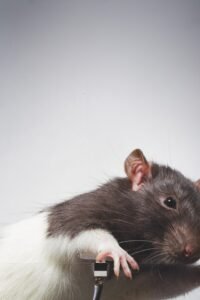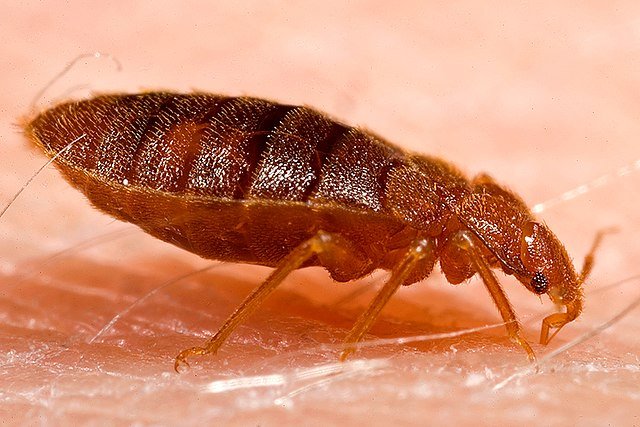Rodent Control: Complete Guide to Identification, Risks, and Management
 Rodents are among the most widespread and adaptable mammals on Earth. They belong to the order Rodentia, which includes more than 2,000 species such as house mice (Mus musculus), Norway rats (Rattus norvegicus), roof rats (Rattus rattus), and even larger species like beavers (Castor canadensis). While not all rodents are harmful, the commensal species that thrive alongside humans pose serious challenges.
Rodents are among the most widespread and adaptable mammals on Earth. They belong to the order Rodentia, which includes more than 2,000 species such as house mice (Mus musculus), Norway rats (Rattus norvegicus), roof rats (Rattus rattus), and even larger species like beavers (Castor canadensis). While not all rodents are harmful, the commensal species that thrive alongside humans pose serious challenges.
In homes, farms, and cities, rodents damage property, consume food, and spread dangerous diseases. Their ability to reproduce quickly and exploit human environments makes rodent control a constant concern worldwide. This article explores how to identify rodent problems, understand their biology, recognize the risks, and implement control strategies that actually work.
Identification of Common Rodent Pests
The term “rodent” covers a wide range of mammals, but in pest control, three groups dominate:
House mouse (Mus musculus) – Small, slender, 6–9 cm body length, dusty gray with a long tail. Common indoors.
Norway rat (Rattus norvegicus) – Large, stocky, with a blunt nose and short tail relative to body length. Burrows and nests at ground level.
Roof rat (Rattus rattus) – Sleeker, longer-tailed, excellent climber, often nesting in attics or trees.
Field rodents (voles, gophers, ground squirrels) – Cause extensive agricultural damage by feeding on roots, tubers, and grains.
Distinguishing species is important because control strategies differ. For example, snap traps sized for a rat will not effectively kill mice, and bait stations need species-specific placement.
Biology and Ecology of Rodents
Rodents thrive due to a combination of traits:
Incisor growth: Their sharp front teeth grow continuously, forcing them to gnaw constantly on wood, plastic, wires, and food containers.
Reproductive speed: A female house mouse can give birth to 6–10 litters per year, with 5–12 pups per litter. Rats produce slightly fewer litters, but with larger offspring.
Behavioral adaptability: Norway rats prefer ground burrows, while roof rats are agile climbers, and mice can survive in tiny indoor spaces.
Dietary flexibility: Omnivorous, rodents consume seeds, grains, meat scraps, and even soap or insulation.
This adaptability explains why rodents are found in nearly every human settlement across the globe.
Global Distribution
Rodents occupy every continent except Antarctica. Human activity—particularly shipping and agriculture—has carried species like Rattus rattus and Mus musculus across oceans for centuries.
Urban areas: Large populations exist in sewers, subways, and garbage disposal systems.
Rural landscapes: Farms provide abundant grain, making barns and silos ideal habitats.
Tropical regions: Species diversity is highest in warm climates, but infestations occur worldwide.
Rodent populations often surge after natural disasters (hurricanes, floods, earthquakes), when infrastructure is damaged and sanitation collapses.
Risks and Damage Caused by Rodents
Rodents are not just nuisances; they carry serious consequences:
1. Disease Transmission
Rodents spread pathogens directly through urine, droppings, and bites, and indirectly through ectoparasites such as fleas and mites. Some of the most dangerous diseases linked to rodents include:
Leptospirosis – Bacterial infection spread via urine in water.
Salmonellosis – Food contamination from droppings.
Hantavirus – Airborne from rodent droppings or nesting materials.
Plague (Yersinia pestis) – Historically spread via fleas from black rats.
2. Structural Damage
Constant gnawing damages furniture, insulation, and packaging. Electrical wiring chewed by rats is a frequent cause of house fires.
3. Agricultural Losses
Rodents can destroy 5–15% of stored grain worldwide each year. Field rodents damage crops by gnawing stems and consuming seeds.
4. Psychological Stress
Infestations often trigger stress, anxiety, and sleep disturbances in homeowners.
Signs of Rodent Infestation
Early detection is essential for successful control. Common signs include:
Droppings: Small, dark pellets along walls, inside cupboards, or near food storage.
Gnaw marks: On wood, cardboard, wires, or plastic containers.
Tracks and smudge marks: Oily streaks along baseboards.
Nests: Shredded paper, fabric, or insulation used for nesting.
Noises: Scratching sounds in walls, ceilings, or attics at night.
Unusual odors: A musky smell from urine and droppings.
If several of these indicators are present, the infestation is already established.
Control Methods for Rodents
1. Sanitation
Store food in sealed containers.
Remove garbage regularly.
Clean up spilled grains, pet food, or crumbs.
Sanitation alone will not eliminate rodents but reduces the carrying capacity of the environment.
2. Exclusion
Rodents enter through cracks as small as 6 mm. Effective measures include:
Sealing gaps with cement or metal mesh (not foam, which rodents can chew).
Installing door sweeps.
Screening vents and chimneys.
3. Traps
Snap traps: Quick kill, reusable, ideal for small infestations.
Glue boards: Less humane, often used for monitoring.
Electronic traps: Deliver lethal shocks, clean and efficient.
4. Rodenticides
Anticoagulant baits (e.g., bromadiolone, brodifacoum) disrupt blood clotting.
Non-anticoagulant baits (e.g., bromethalin, cholecalciferol) offer faster action.
Use must follow strict safety protocols to prevent poisoning of pets and non-target animals.
Advanced Approaches to Rodent Management
Integrated Pest Management (IPM)
Modern rodent control emphasizes IPM, combining biological, cultural, physical, and chemical tactics. Instead of relying solely on poisons, professionals use:
Rodent-proofing architecture – designing buildings with sealed foundations.
Monitoring with sensors – smart traps that send alerts when triggered.
Ecosystem management – encouraging natural predators such as owls and snakes around farms.
Biological Control
Barn owls (Tyto alba) are natural rat predators. Nest boxes placed in agricultural fields have reduced rodent numbers without chemicals.
Population Suppression
Some regions experiment with fertility control baits that reduce rodent reproduction rates. Though not yet widely commercialized, these may become key tools in the future.
Cultural and Historical Context
Rodents have influenced human history more than most pests:
The Black Death (14th century) – Black rats (Rattus rattus) and fleas helped spread plague, killing up to half of Europe’s population.
The Great Fire of London (1666) – partly attributed to rats chewing on food storage and wooden structures, worsening conditions before the fire spread.
Agricultural revolutions – Rodent infestations drove innovations in grain storage and pest control throughout Asia and Europe.
Modern warfare – Soldiers in World War I trenches constantly battled rats that fed on corpses and spread disease.
These examples show how rodents are not just pests but historical forces.
FAQ: Rodent Control
Q1. How do I know if I have rats or mice?
Mice are smaller (2–4 inches), leave rice-sized droppings, and can fit into tiny openings. Rats are larger (7–10 inches), leave larger droppings, and gnaw more aggressively.
Q2. Can rodents climb walls?
Yes. Roof rats are excellent climbers and often nest in attics or palm trees, while Norway rats are more ground-dwelling.
Q3. Are ultrasonic repellents effective?
Scientific studies show limited success. Rodents may become accustomed to the noise, making repellents unreliable for long-term control.
Q4. What’s the safest way to control rodents with pets in the house?
Use enclosed bait stations, snap traps in secure locations, and exclusion methods instead of loose rodenticides.
Q5. Do rodents only infest dirty homes?
No. Even clean homes attract rodents if food, water, and shelter are available. Sanitation helps but does not guarantee rodent-free conditions.
Q6. Why do rodents gnaw on wires?
Their continuously growing teeth require constant gnawing. Unfortunately, when they chew on electrical wiring, it can lead to shorts and fires.
Q7. Can natural predators control rodents?
Predators like owls, cats, and snakes help, but rarely eliminate infestations entirely. They work best as part of an integrated strategy.
Q8. How quickly can a rodent infestation grow?
A single pair of mice can produce hundreds of offspring in a year. Without control, infestations spread rapidly
Final Thoughts
Rodents are more than just occasional household nuisances. From Norway rats (Rattus norvegicus) to house mice (Mus musculus), they carry diseases, damage property, and compromise food safety. Effective rodent control is not achieved with a single tactic but with a comprehensive approach: sanitation, exclusion, trapping, and—in some cases—targeted rodenticides.
Modern strategies like Integrated Pest Management (IPM) highlight prevention, monitoring, and minimal chemical use, making long-term rodent management more sustainable. Property owners should treat rodent prevention as a constant process rather than a one-time event.
If signs of infestation appear—droppings, gnaw marks, noises in walls—swift action is necessary. Small populations are much easier to manage than large, established colonies. For safety and effectiveness, consulting a licensed pest control professional is strongly advised.
Disclaimer
This article is for informational purposes only. Pest control laws and approved chemicals vary by country. For best results and legal safety, we strongly recommend contacting a licensed pest control professional in your local area. Always make sure that the pest control technician is properly certified or licensed, depending on your country’s regulations. It’s important to confirm that they only use approved products and apply them exactly as instructed on the product label. In most places in Europe, UK, or USA, following label directions is not just best practice—it’s the law.
Author Bio
Nasos Iliopoulos
BSc Agronomist & Certified Pest Control Expert
Scientific Director – Advance Services (Athens, Greece)
Licensed Pest Control Business – Ministry of Rural Development & Food (GR)
References
Oklahoma state University - Rodent Control in the Poultry House

